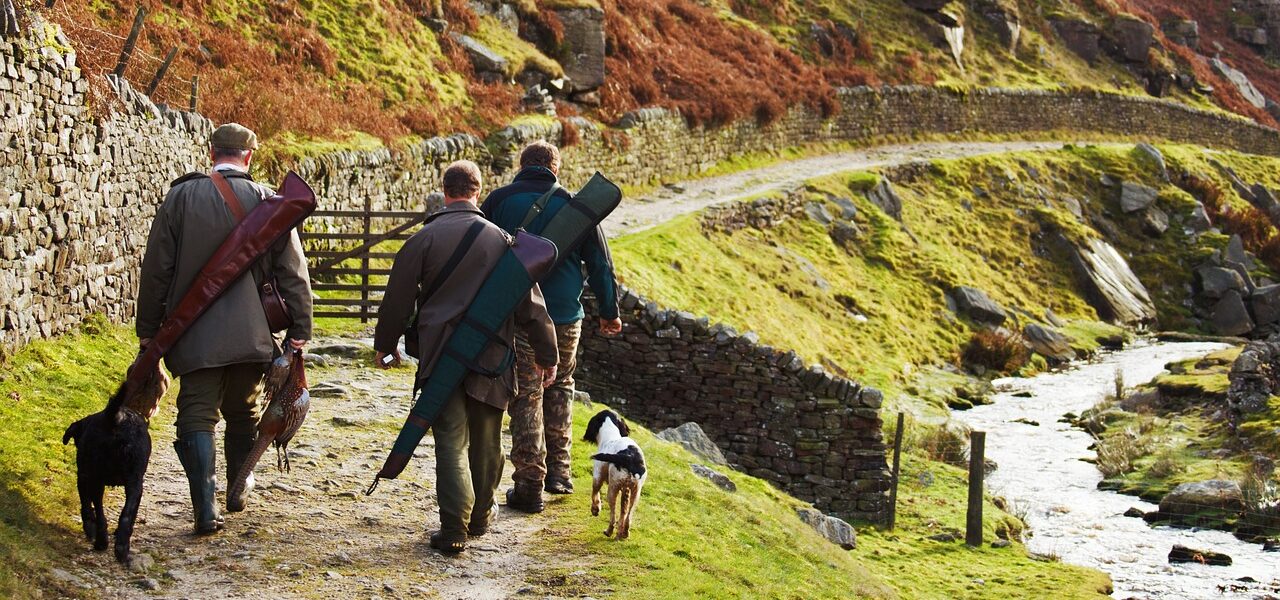Every deer hunter would tell you how difficult it is to track a deer on their own. At most, there is only a 50/50 chance of success of recovering a wounded deer body. Hunters keep shouting their frustration over shooting a deer but it successfully runs away leaving them with nothing but an unfinished story.
This is when having a wonderful dog will come in like a hero closing the deal. You can teach your dog to track deer blood because they have one of the most sensitive and accurate sense of smell on the planet. Humans are following trail blindly about 90% of the time. It’s about time to follow a dog tracker and make the hunt more exciting than ever.
Preparing Your Dog
The idea is that your dog will track the deer that you failed to kill in one shot. You would have to take your dog to the spot where the deer was shot and have him get familiar with its scent and follow a trail from there. It does happen that your dog can lose the deer’s scent or you would call off the hunt.
To prepare for training, you would need several materials including deer blood, deer meat, deer hide, spray bottle, squeeze bottle, harness, leash, treats and beef liver. It is best to practice in the woods or a good location that would resemble your hunting ground. But most importantly, you’ll need plenty of patience to train your dog because it will take a couple of months before they can master this skill.
Though hide and sick is easy and more common in training dogs, there are different methods to train them to track deer blood. We’ll talk about the Beef Liver Method and Squeeze Bottle Method.
The Squeeze Bottle Method
The first thing you should do is freeze deer blood from a kill. You should also store some hide and meat cut in chunks that you can use as treats during training. Once you are ready to start training, put the freshly thawed deer blood on the squeeze bottle. You may need to filter the blood first to avoid blockage on your bottle
Go to the field where you plan to train your dog. As you walk and create a trail, drizzle a little bit of blood on the ground every couple of steps resembling a drop of blood from a wounded deer. Start by making a straight line trail at first and make it more challenging as your training advances. Allow the trail to age for about two to four hours before you start training. Always remember to put a deer skin or meat at the end of the trail.
Allow your dog to find the beginning of the trail and follow it until he sees the end. Practice the same length and difficulty of the trail for several weeks before you advance to another level and add difficulty in the trail the dog needs to follow. You can also prolong the age of the trail as your dog masters the skill.
You can make the trail more challenging by creating twists and turns and making sure your dog does not get distracted and stay focused on his goal to find the end of the trail.
The Beef Liver Method
This method is very much similar to the squeeze bottle method but instead of using deer blood, you’ll be using beef liver to make the trail. Drag the beef liver on the ground to create straight line trails for starters. And leave a chunk at the end of the trail.
Make sure to put your dog on a leash while you make the trail. Let him get familiar with the scent of beef liver.
When you’re both ready, bring your dog to the beginning of the trail. Let him follow the trail and give treats as he reaches the end. Repeat the process while making longer trails. Add 90-degree turns to add challenge to the trail as your dog masters your current training.
After the beef liver training, you can advance to introducing deer hide or deer blood to create your trail. Repeat your training until hunting season and let your dog prove his skill by then.
If you find it difficult to start with any of the two methods, you can begin with hide-and-seek using a deer hide sprayed with a little deer blood. You can start letting your dog play with it at home and then initiate a hide-and-seek game. As gets the hang of the whole training and gets very familiarized with the smell of deer hide and blood, you can advance to outdoor training.
